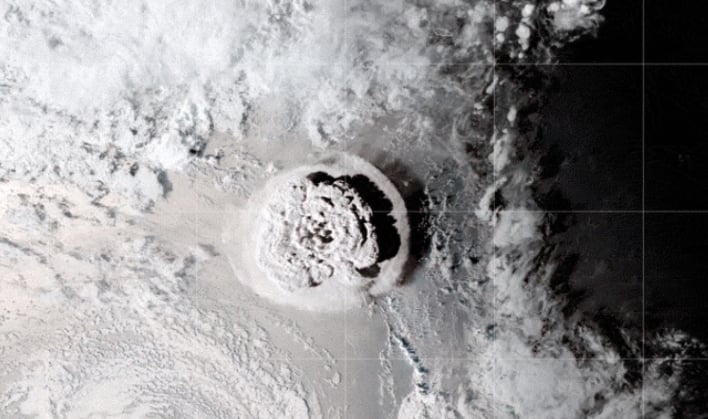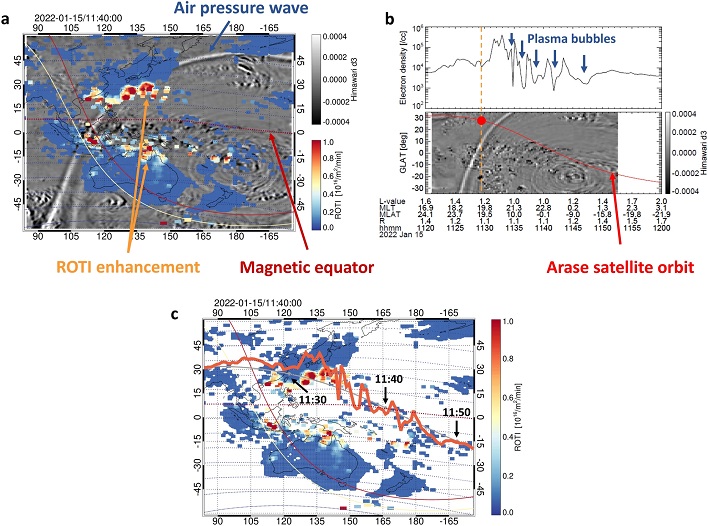Undersea Tonga Volcano Eruption Created Plasma Bubbles That Disrupted Space Satellites

The Tonga eruption occurred on January 15, 2022. The massive explosion sent shock waves, sonic booms, and tsunami waves throughout the world, killing at least three people, and severing an underwater fiber-optic cable that connects Tonga to the rest of the world. A research team from Japan has shared new findings about the Tonga eruption in a paper published in the journal Scientific Reports.
The paper stated the team "used satellite and ground-based ionospheric observations to demonstrate that an air pressure wave triggered by the Tonga volcanic eruption could cause the emergence of an equatorial plasma bubble." This type of phenomenon is powerful enough that it could disrupt satellite and GPS communications.
After analyzing data from its Ionospheric Connection Explorer (ICON) mission and the European Space Agency's Swarm satellites, NASA said the effects of the Hunga Tonga-Hunga Ha'apai eruption electrified the upper atmospheric layer at the edge of space.
At that time, Ben Harding, a physicist at the University of California, Berkley, and lead author of another study of the eruption, remarked, "The volcano created one of the largest disturbances in space we've seen in the modern era. It is allowing us to test the poorly understood connection between the lower atmosphere and space."
What the new study shows is after a shockwave from the volcanic eruption hit the ionosphere, equatorial plasma bubbles were detected "extending to space at an altitude of at least 2,000 kilometers (1,240 miles)." The research team also found an abrupt rise in electron density and an increase in the height of the ionosphere hours before the first arrival of the shockwave. This disturbance in the ionosphere is what researchers believe may have caused a plasma bubble to form.
"The results of this research are significant not only from a scientific point of view but also from the point of view of space weather and disaster prevention," explained study author Atsuki Shinbori, a professor at Nagoya University. He added, "Such plasma bubbles are rarely observed in the ionosphere."
The new research could help forecast plasma bubbles associated with volcanic eruptions in the future. While this type of detection may not be able to prevent disruptions to satellites and GPS signals, it could provide an early warning system for operators of airplanes and ships that are going to be passing through the plasma bubbles.
Shinbori says the new findings could also be used to investigate the atmospheric effects of volcanoes on other planets. He remarked, "For example, Venus is covered by thick clouds, and it is difficult to directly determine the presence or absence of active volcanoes there only by optical observations by satellites. The presence of active volcanoes there may be confirmed by plasma measurements like those made by the Arase satellite."



